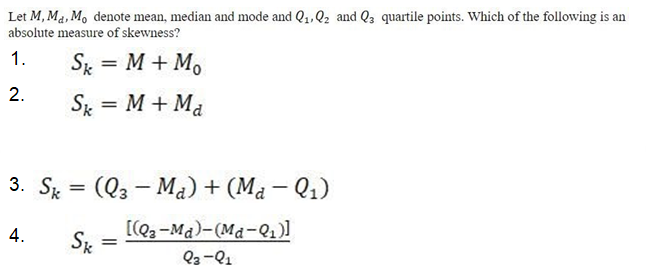Start learning 50% faster. Sign in now
From statement I alone, M is taller than L and O. P is shorter than at least two person. Q is shorter than N, so, number of person taller than M can’t be known. From statement II alone, P is taller than only two person. F is taller than M but shorter than N. L is taller than only O. So, the final arrangement is shown below, N > Q > M > P > L > O Two person are taller than M. Data given in statement II alone are sufficient to answer the question.

For frequency distribution presentation , which option is wrong.
A random sample of size 225 is drawn from the population of mean μ and standard deviation σ. The sample mean follows the distribution with mean 100 a...
The incomes of the employees in a state is assumed to be normally distributed with mean ₹15,000 and variance ₹900. The median of the distribution o...

Two data set of size 9 and 6 have standard deviation 3 and 4 respectively and arithmetic means 3 and 3 respectively. The standard deviation of combined...
Which of the following is a sources of primary data?
Which of the following statements is INCORRECT?
For the recorded observation, the coefficient of variation is 0.2 and the variance is 16. The arithmetic mean is:
At a round table, n persons are seated on n chairs. The probability that two friends from same college are sitting next to each other, is: